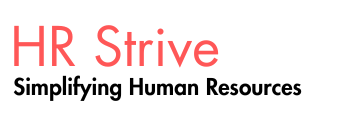The SWOT analysis is a simple and effective process for assessing an
organization's strategic capabilities in comparison to threats and
opportunities identified during environmental scanning. Although we refer to
SWOT as an organizational tool in this section, it can also be used to analyze
the strengths and weaknesses of parts of an organization (for example, the HR
function), products or services, and individual initiatives.

Information gathered from
environmental scanning can be used to complete a SWOT analysis. Meetings can be
used to generate items and sort them into the four categories that are commonly
illustrated in a four-box matrix (as in Exhibit 4). Later analysis could focus
on weighting strengths and weaknesses relative to specific environmental
changes (threats or opportunities). These analyses usually take the form of a
ranking sheet: Each scenario (for example, a strategic option) is scored
against the four categories, and the scenarios are ranked by composite score.
A SWOT analysis can underscore the need for addressing cultural misalignment or skill gaps before committing to a strategy. It is often performed as companies consider entering new markets, expanding globally, or forming a strategic alliance. As with all aspects of strategic planning, a SWOT analysis of a global organization is more complicated. It must consider local variations in performance, competitive situations, exchange rates, labor supply, and various political, cultural, and legal influences in each locale.
Exhibit shows a classic four-quadrant model of an HR function's SWOT analysis of its current strategic position.
This HR function has ranked its items and identified key strengths and weaknesses. Considering its environmental scan and discussions with management, it has identified three opportunities and two threats that could affect its strategic capabilities. It is important to remember that sharing the information that is gathered is an important job function for HR professionals.
The same process could be applied to specific HR strategic activities, such as global talent management programs, self-service online employee benefit centers, or programs in workplace harassment.

A SWOT analysis can underscore the need for addressing cultural misalignment or skill gaps before committing to a strategy. It is often performed as companies consider entering new markets, expanding globally, or forming a strategic alliance. As with all aspects of strategic planning, a SWOT analysis of a global organization is more complicated. It must consider local variations in performance, competitive situations, exchange rates, labor supply, and various political, cultural, and legal influences in each locale.
Exhibit shows a classic four-quadrant model of an HR function's SWOT analysis of its current strategic position.
This HR function has ranked its items and identified key strengths and weaknesses. Considering its environmental scan and discussions with management, it has identified three opportunities and two threats that could affect its strategic capabilities. It is important to remember that sharing the information that is gathered is an important job function for HR professionals.
The same process could be applied to specific HR strategic activities, such as global talent management programs, self-service online employee benefit centers, or programs in workplace harassment.

No comments:
Post a Comment